Underground Naples
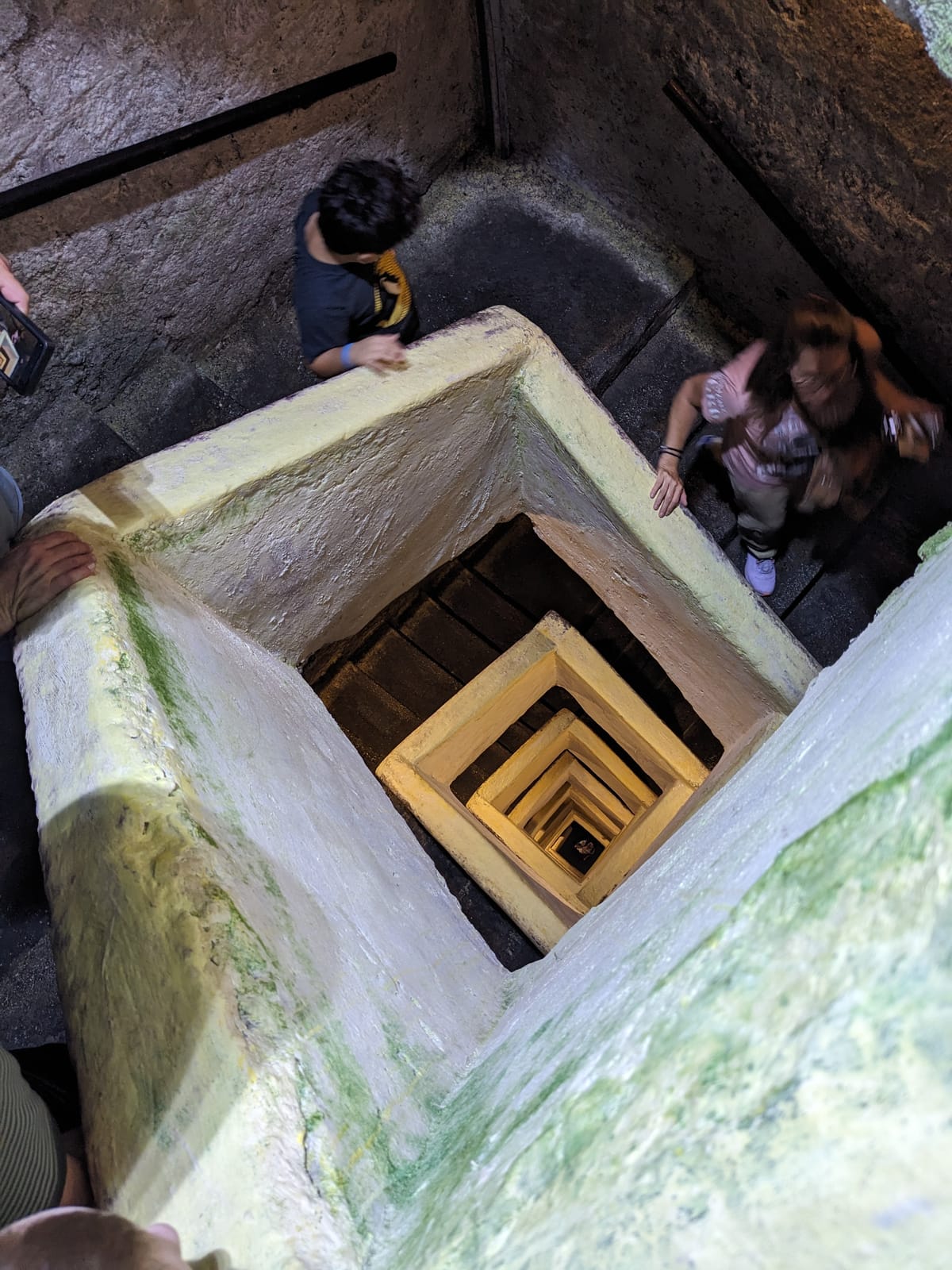
On Tuesday, our first full day in Naples, we did a LOT of exploring — we walked more than 11km! — but the absolute highlight was Napoli Sotterranea (Underground Naples). This was a guided one-hour tour of (a small section of) the 450km network of aqueducts, reservoirs and tunnels under the city of Naples. It was absolutely fascinating and engaged the boys more than any other tour we've done so far!
The Ancient Greeks began digging these tunnels about 2400 years ago in order to use the stone to build Neopolis. Later, the Romans used them as aqueducts to supply water to the city. The underground only ceased being used for water after a terrible cholera epidemic in the 1880s. After that, it was used by the residents of Naples as a place to throw rubbish.
The underground again proved its worth during WWII when it sheltered 300000 residents of Naples from frequent Allied bombing raids. Naples was the most bombed city in Europe. What did they do about the rubbish, you ask? They squashed it and covered it in concrete! Our guide said we were walking on "four metres of compacted trash"!
After the war, the tunnels were forgotten and/or used as a rubbish repository again until the 1960s, when an association was formed to study and clean out some of the tunnels. Exploratory walks began being offered in the late 1970s and soon became a popular tourist attraction.
Here are some photos...
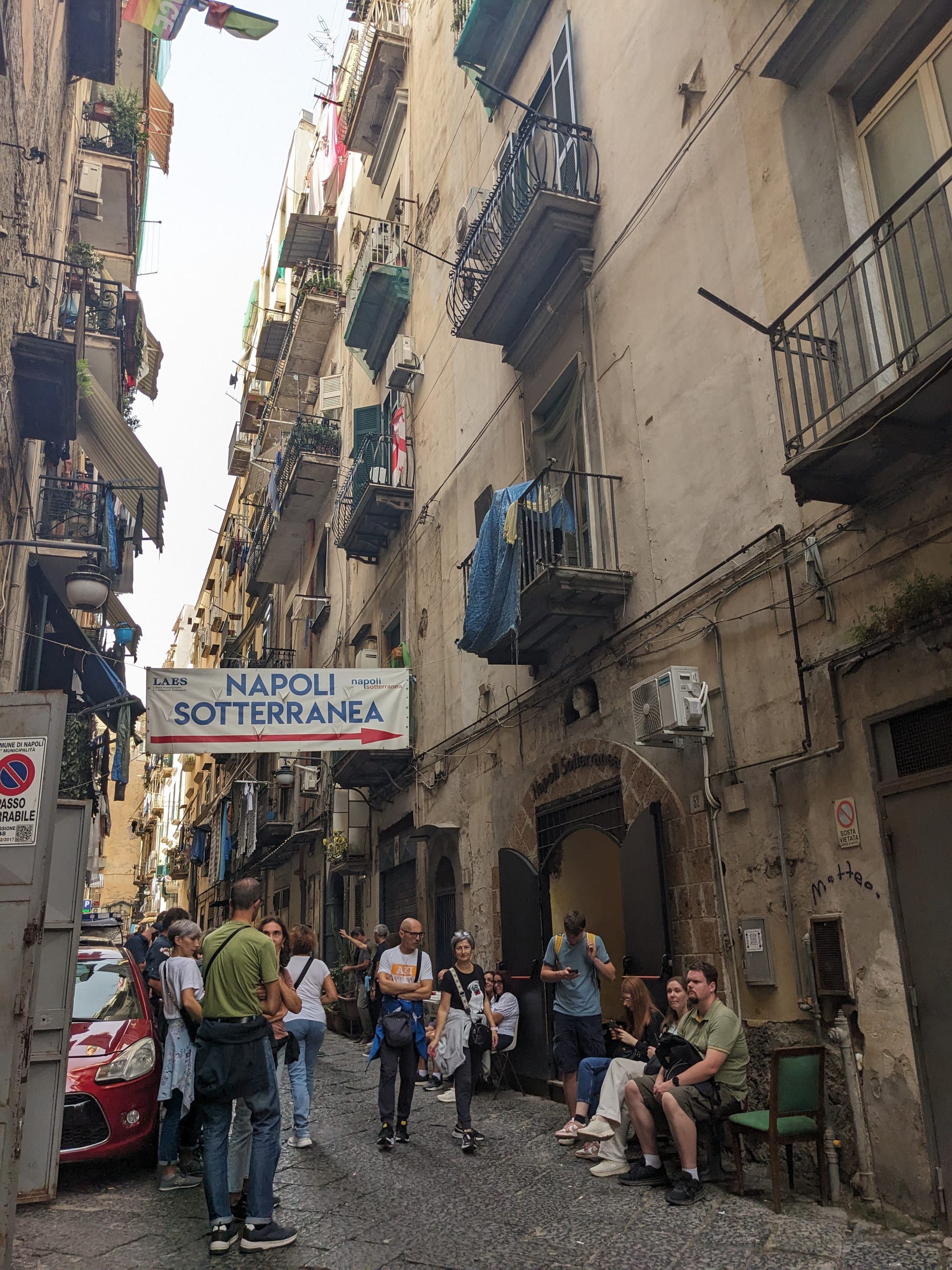
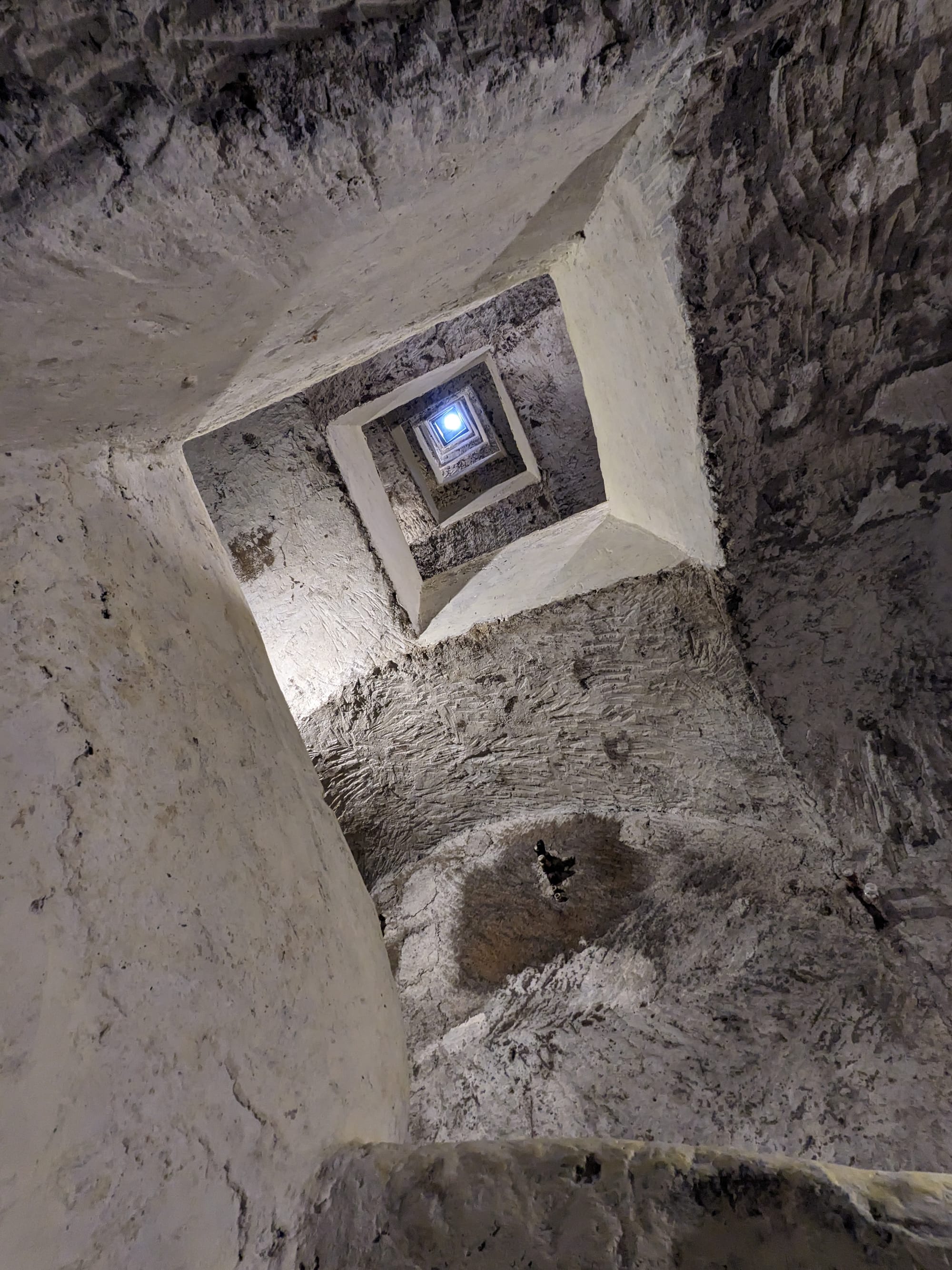
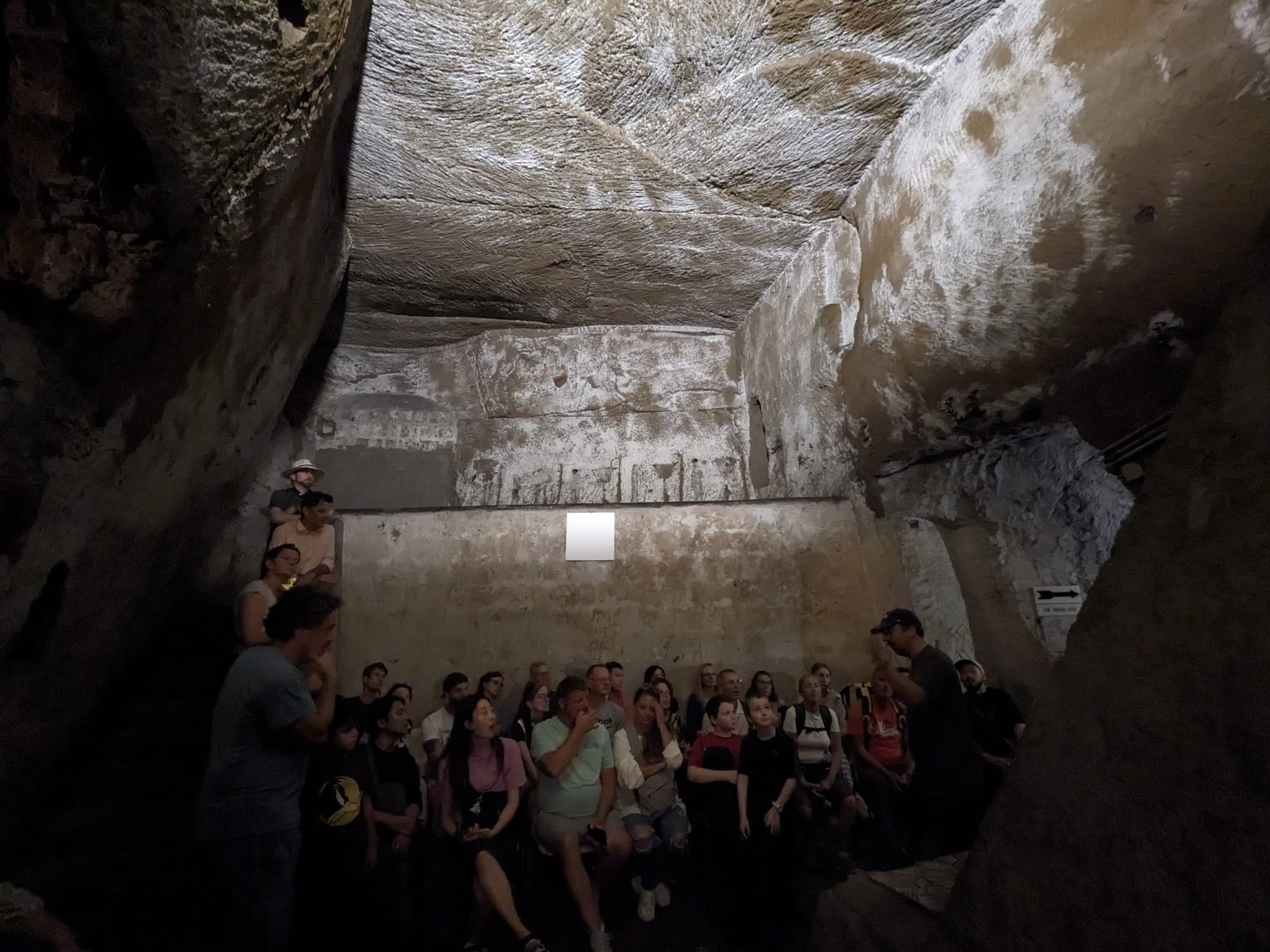
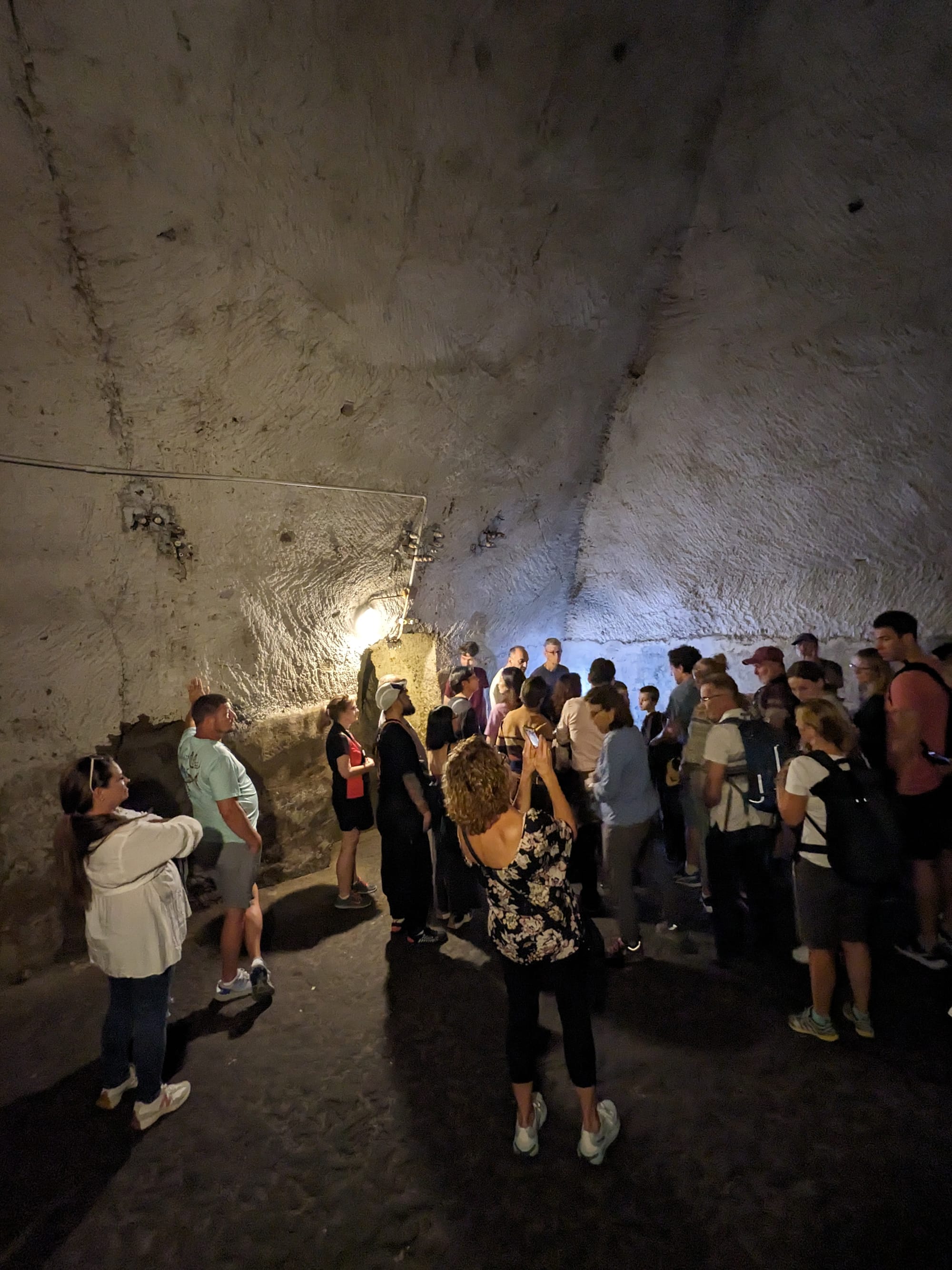
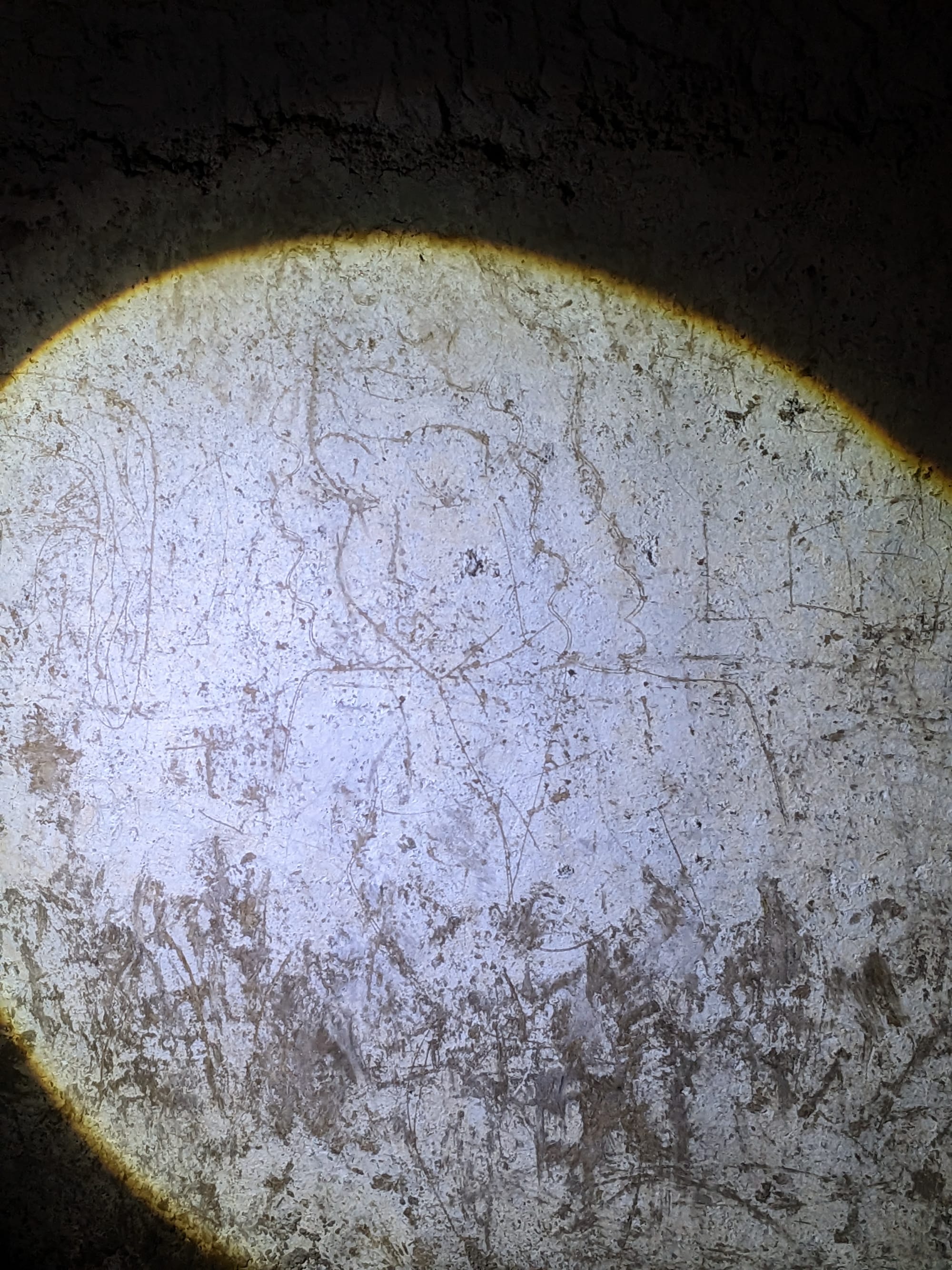
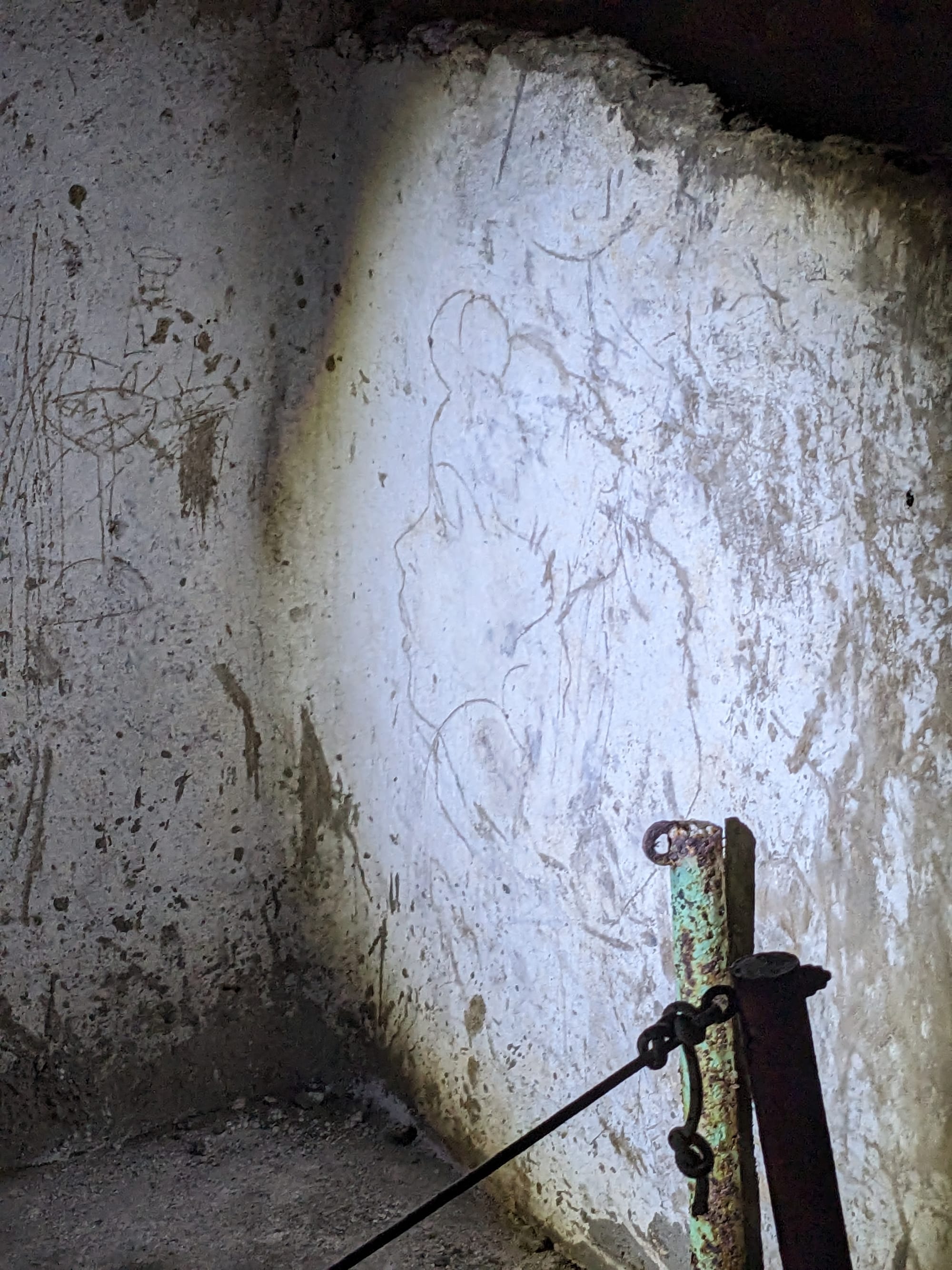
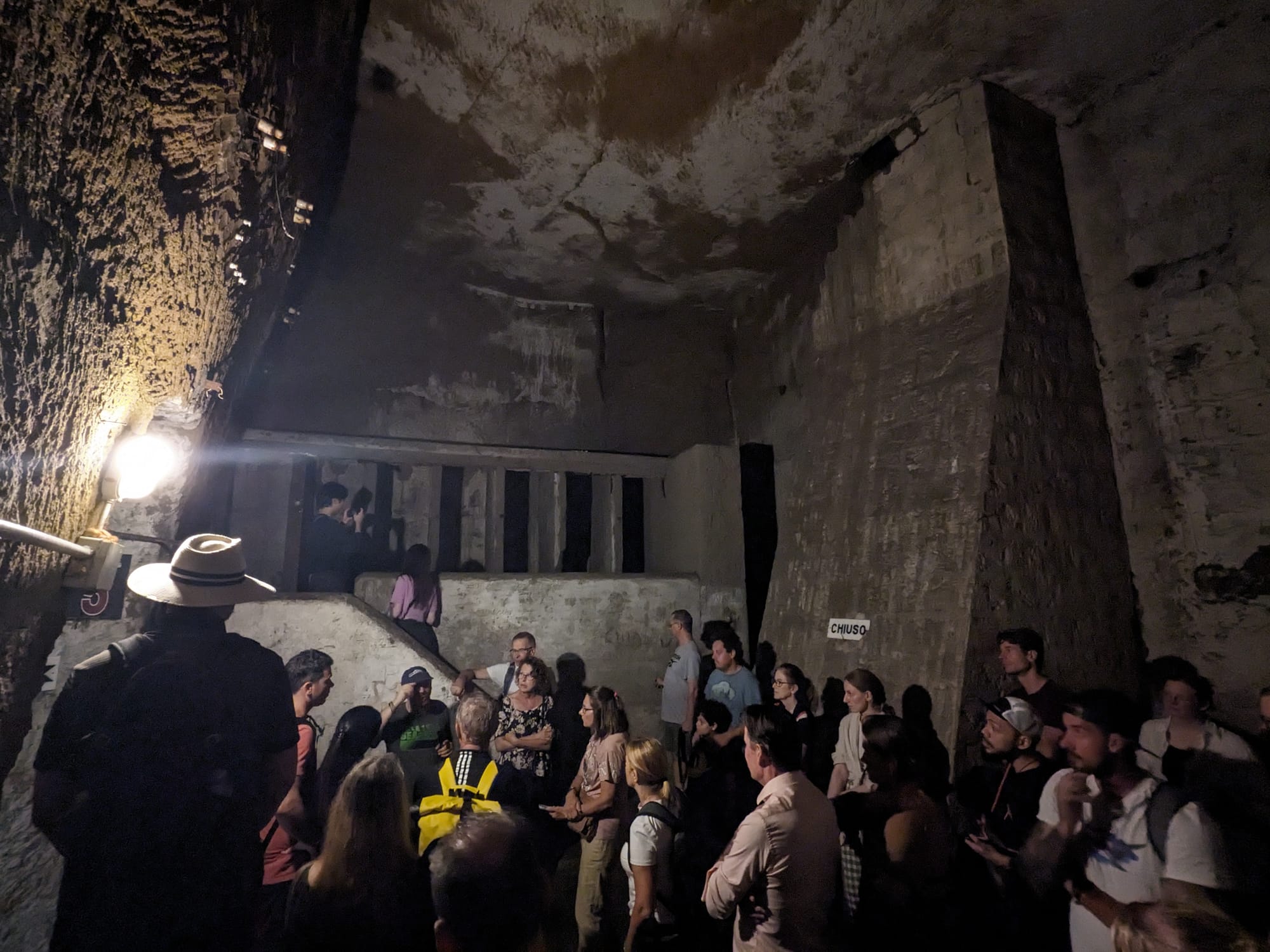
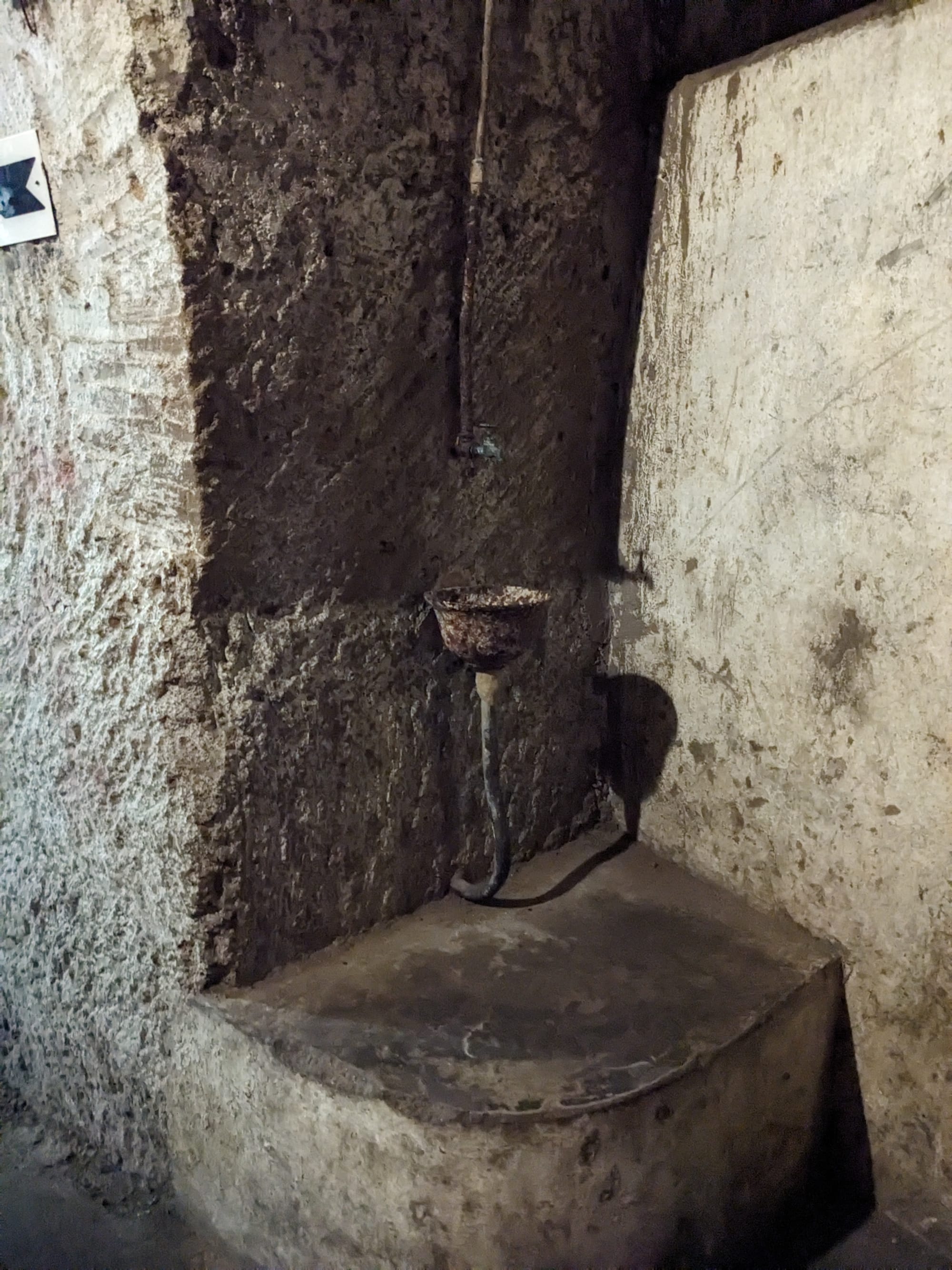
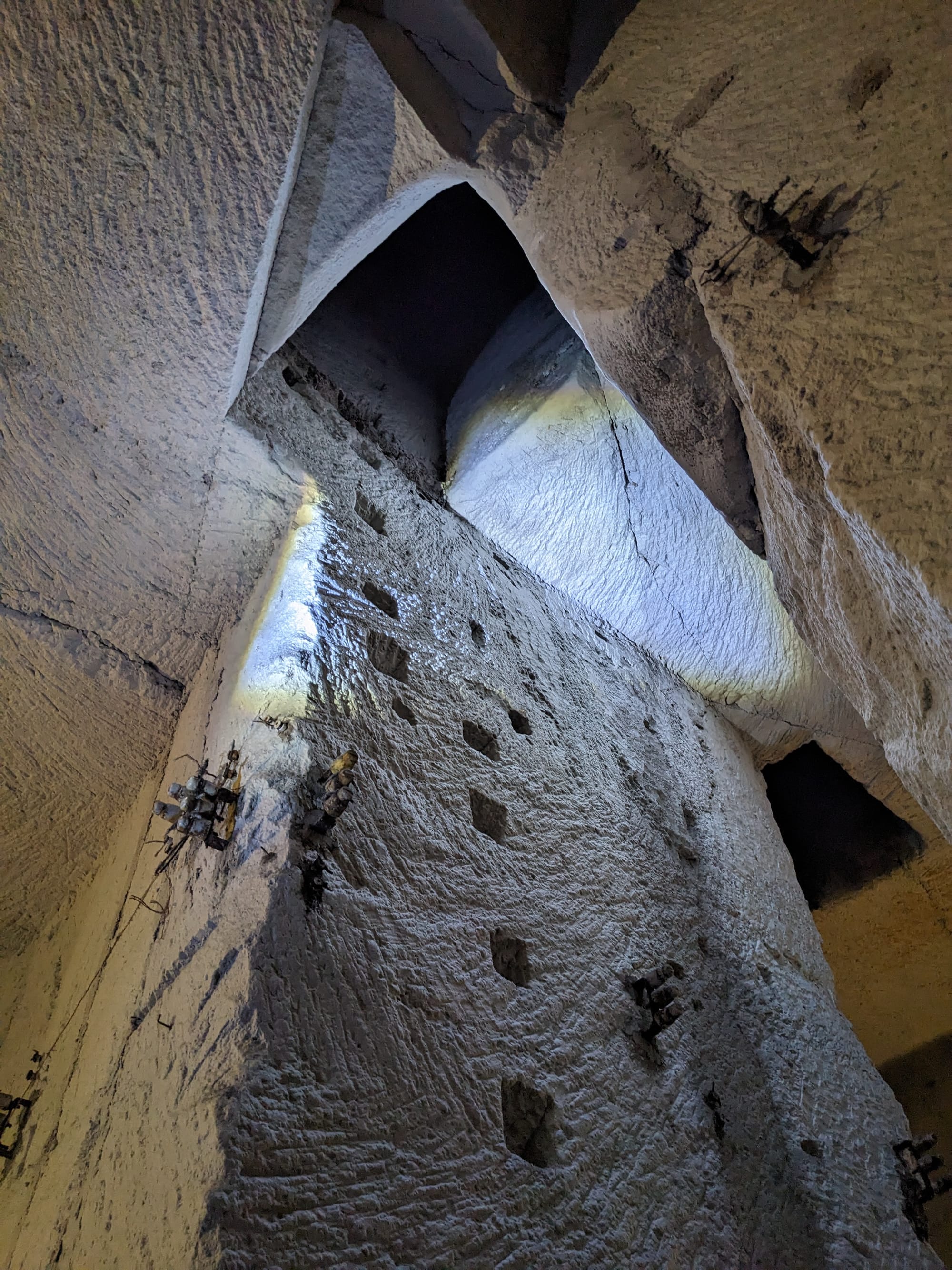
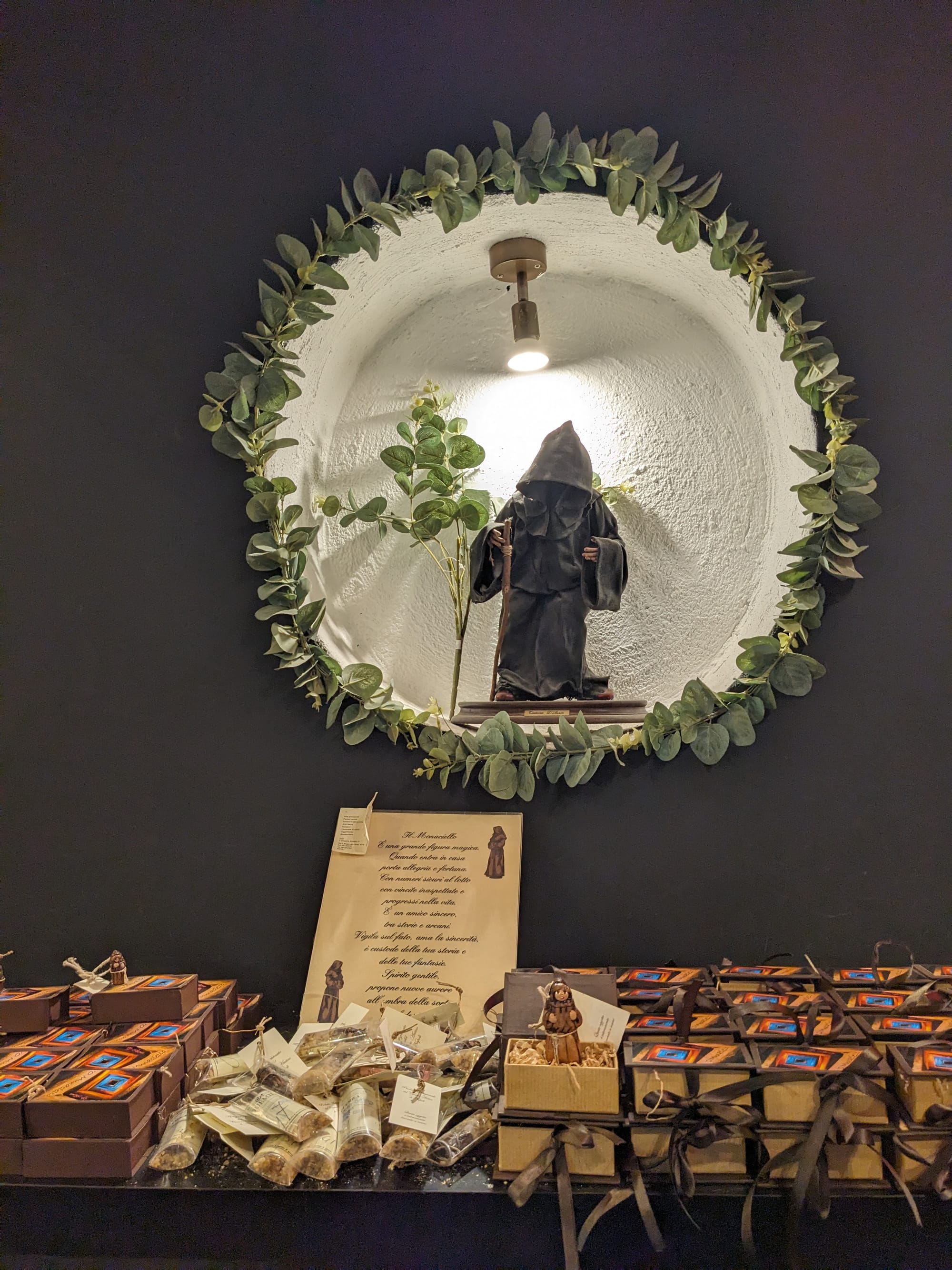
Three times during the tour, we had to squeeze through tunnels so tight that we had to bend down, carry our backpacks in our hands, and sometimes sidle sideways rather than put one foot in front of the other! Meanwhile, the cry of "watch your head, watch your step" would be passed back through the group. There was always a backup way through for the people who didn't want to or weren't able to do this, but only two or three people opted out.
The boys went haring ahead, trying to hide around corners and scare us as we came along. Alex was a great sport in encouraging and being entertained by this, while still keeping them in line (i.e. telling them they could scare their parents but not everyone else)!
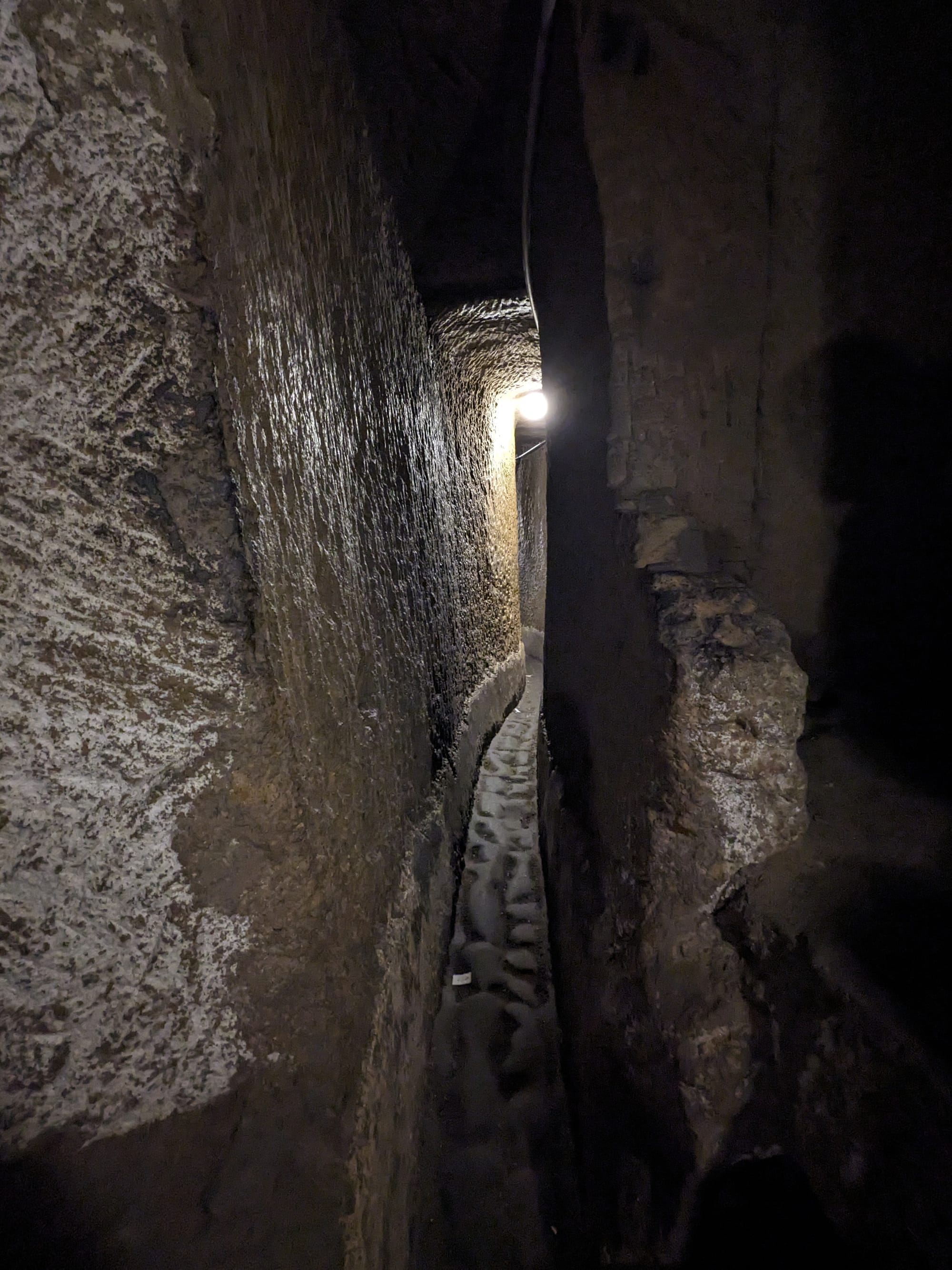

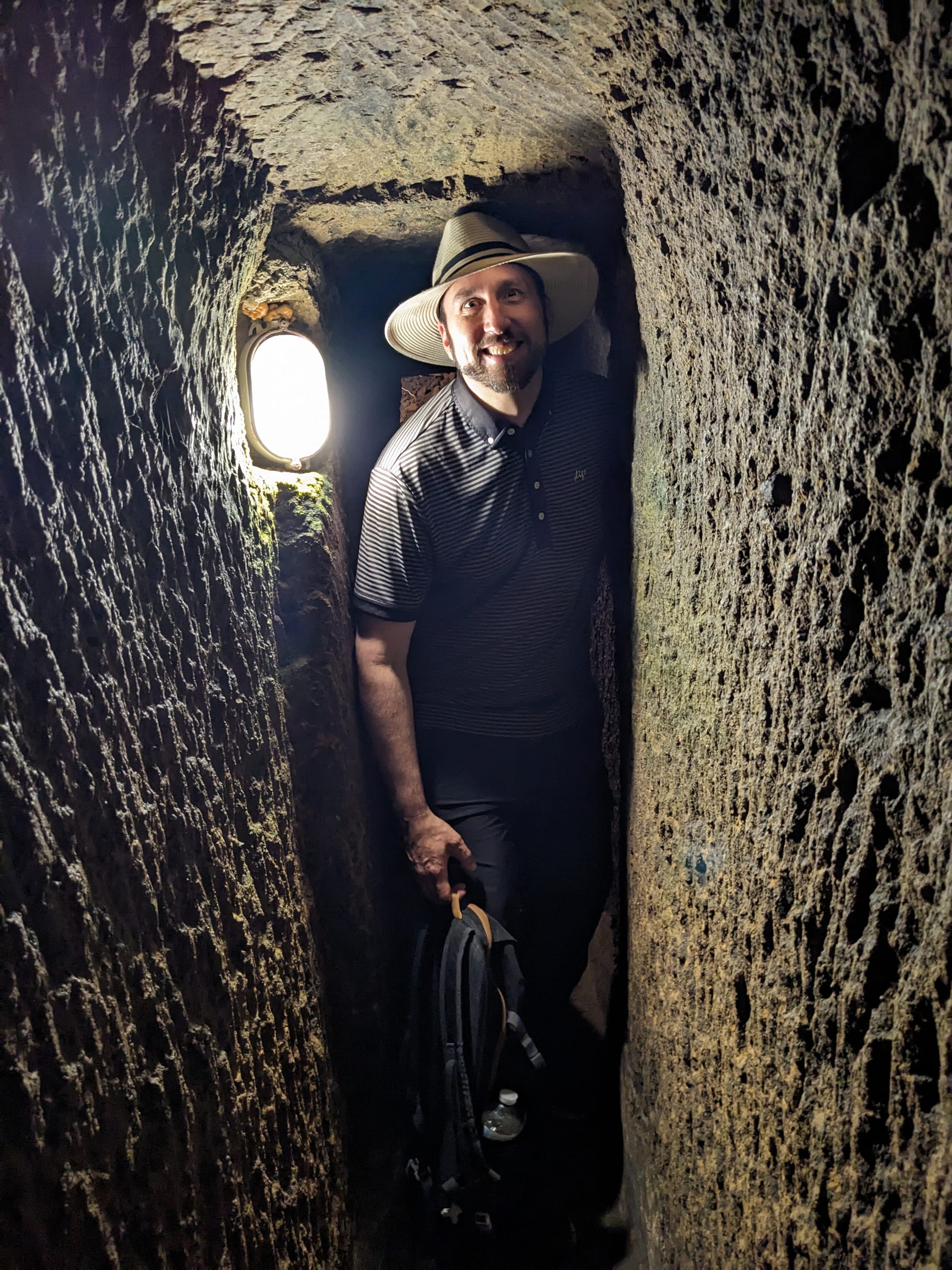
Skinny tunnel number three.
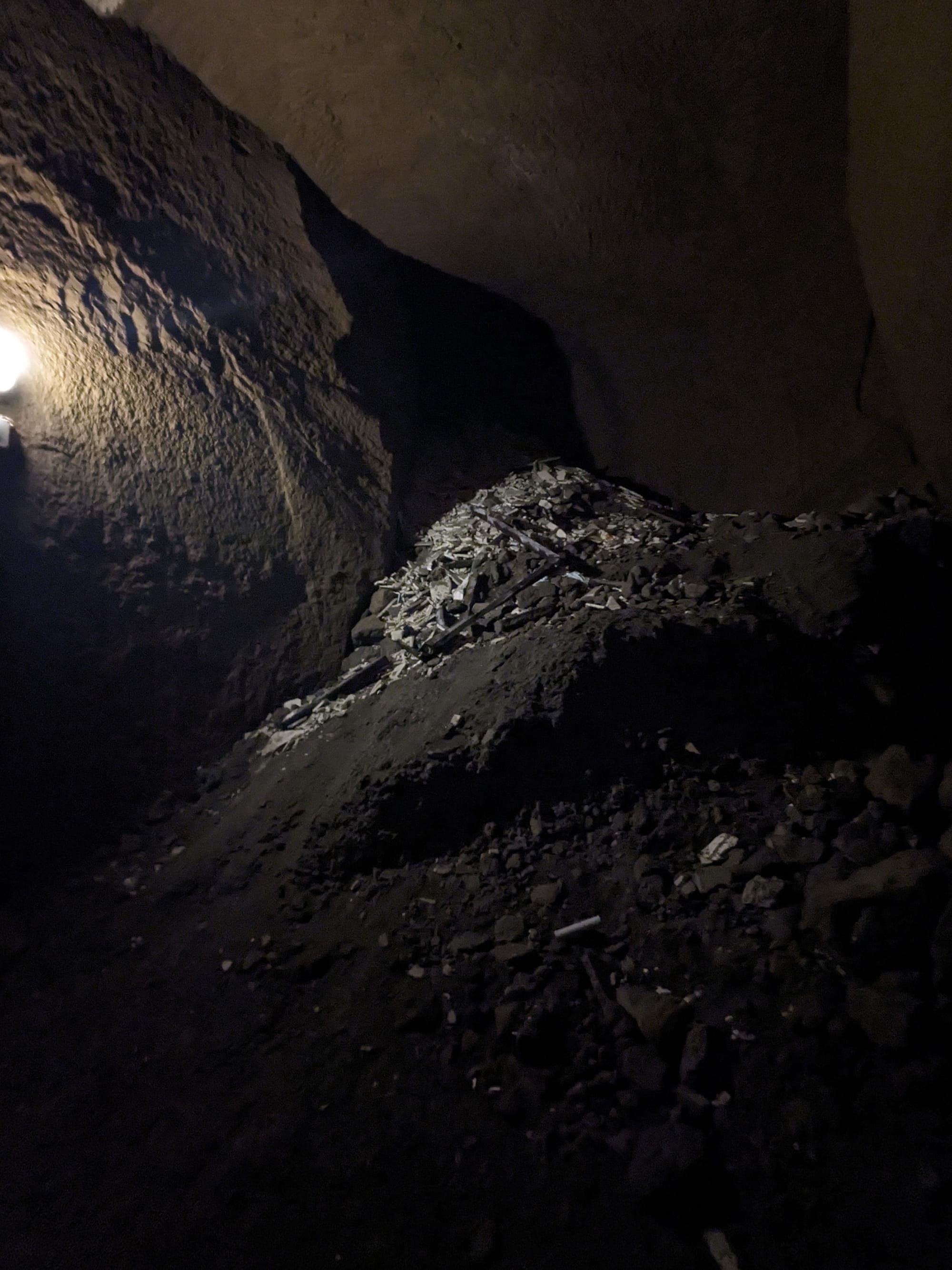
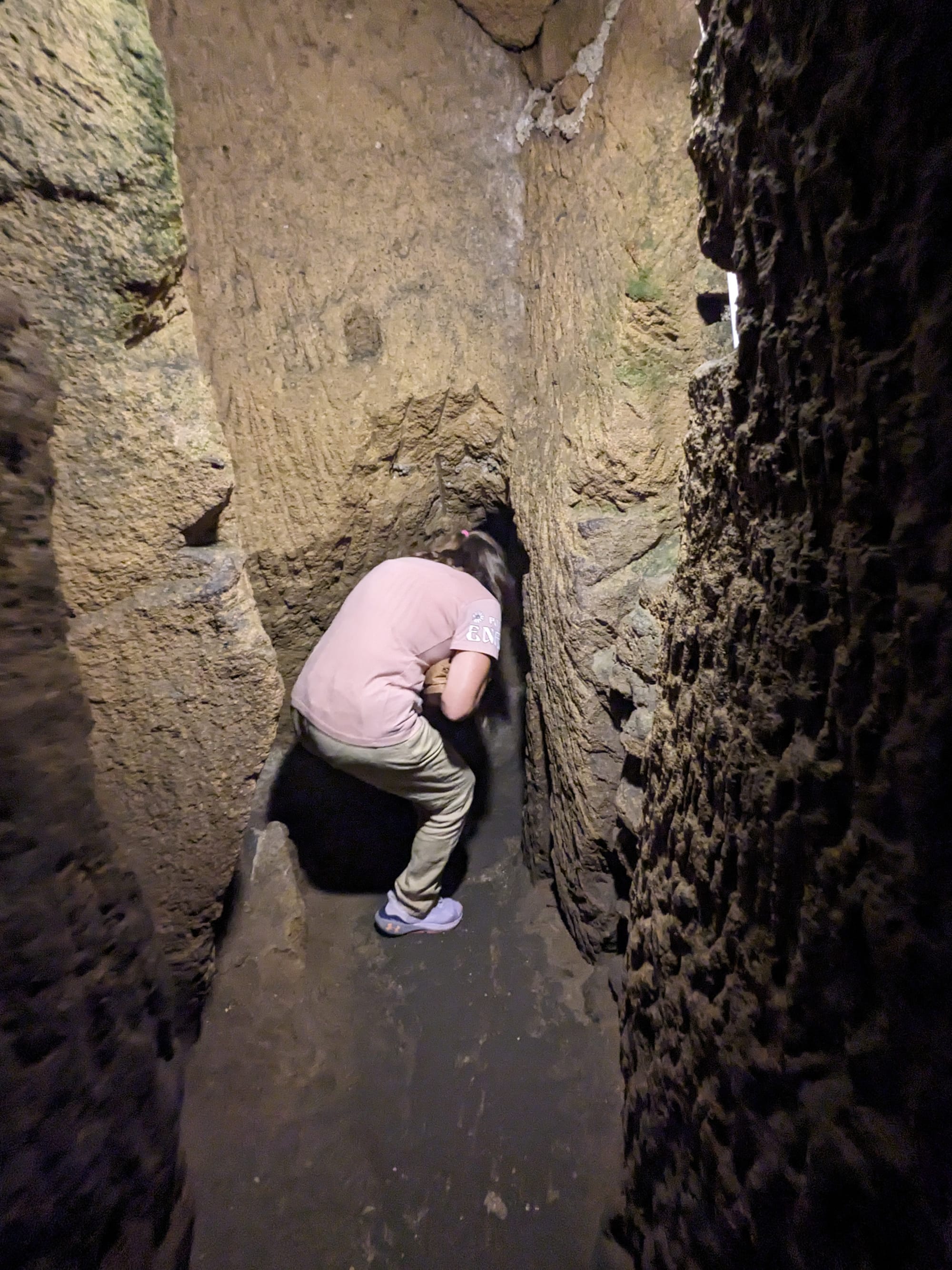
The boys trying to scare B as he emerged from skinny tunnel number three.
This tour is an absolute must-do in Naples and one of our trip highlights to date. It was incredible!
